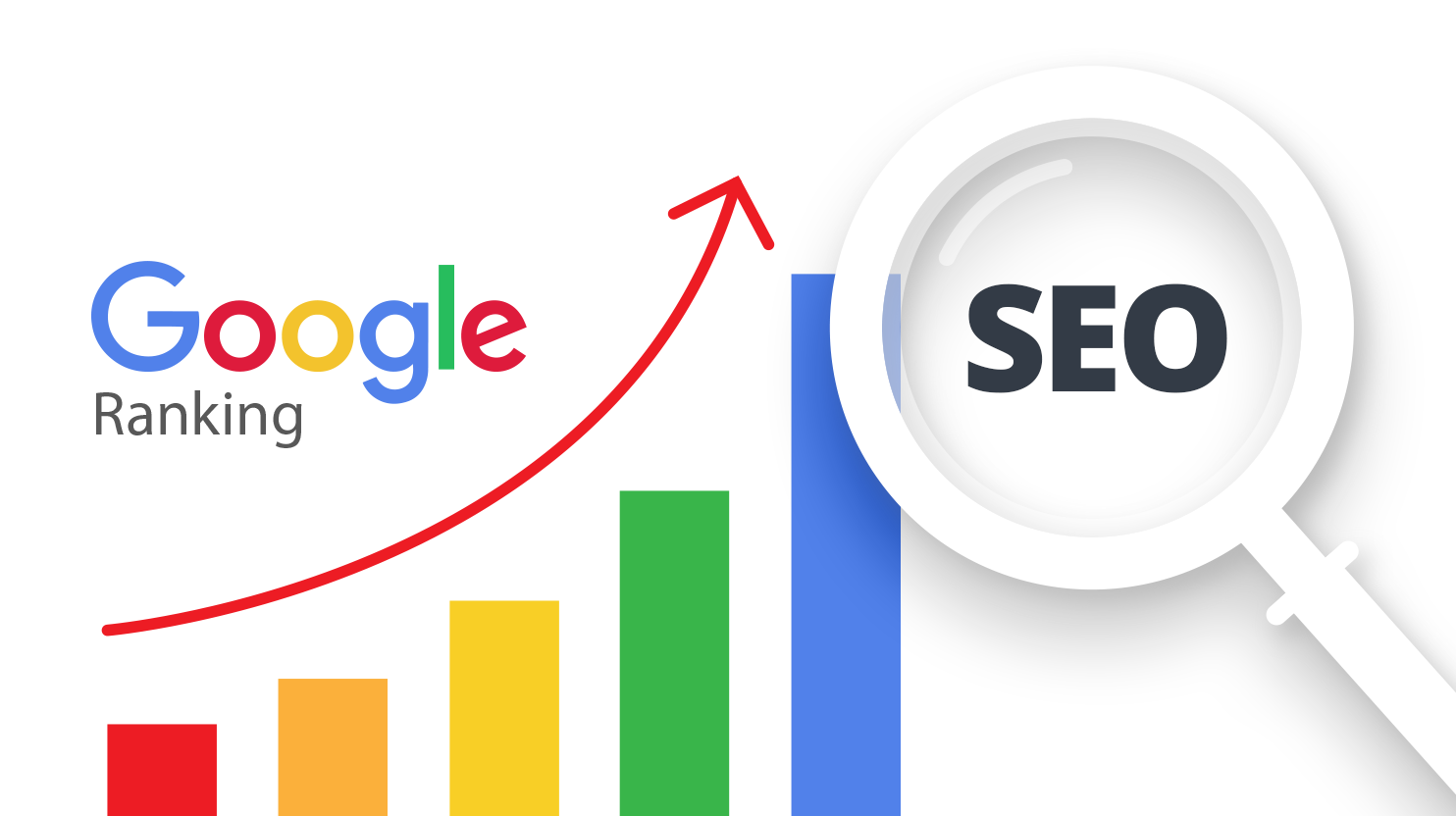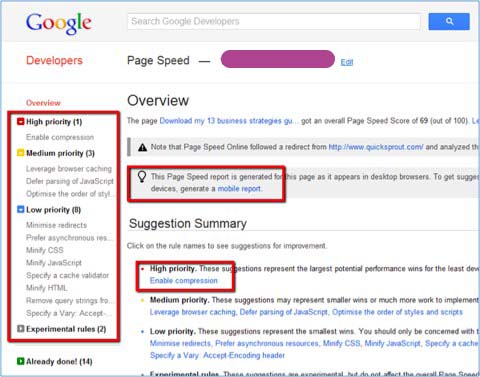Organic search remains an important way to generate traffic for your blog.
It’s an essential part of blog marketing and in the following post we’ll show you the steps and tools you need to optimize your posts to help rank your blog.
Let’s get started.
1. SEO friendly blog design
Did you know that building a beautifully-designed website can be just as important to search engine rankings as site architecture and knocking out high-quality content?
Check Out Free Premium SEO Friendly Blog Template:
1. WordPress high Quality Premium template.
2. Blogger Premium Responsive SEO friendly Theme.
But what exactly should you pay attention to? To help you, I’ve put together a list of ten elements for good blog design that are also proven to help your search engine rankings.
Keep important content above the fold
This is pretty standard, and some would even argue that it’s not that important since people are trained to scroll, but in my own tests and the tests of others, I’ve seen it proven over and over again. So, keep the important information in those top 768 pixels. Research has shown that people do scroll, but they actually spend 80% of their time above the fold and only 20% below.
This brings us to the topic of sliders, which are pretty popular. I’m not a fan of sliders because they tend to confuse the user. When a user arrives on a page and the real estate above the fold is dominated by a slider, the hunt is on.
That’s never a good user experience.
Instead, if you decide to use a slider, make sure that its position is justified. In other words, make sure that a slider is the most important thing you want a user to see/do when he or she arrives at your website/blog.
For example, it might be justified to use a slider to feature your top products or top content on a site. It’s justified on Entrepreneur:
But notice how the user stays in complete control. That is another essential factor you must keep in mind when creating a slider.
In the case of Quick Sprout, the important information is two-fold: the latest blog post and the call-to-action for a free report. So, always determine what is the single purpose of the page…and then make sure it is above the fold.
2. Keep the number of links on a page under 100
While Google recommends that you keep the number of links on a page under 100, this is not for search purposes, but design and user experience purposes. In fact, Matt Cutts published a page with close to 200 links on it.
Why does Google recommend you limit the number of links to 100? It used to be that Google would only index up to 100 kilobytes of a page…that equalled to about 100 links. Now Google can easily index a page much larger than that.
So, what happens if you decide to place more than 100 links on a page? Google might crawl you and look at you like a spammer.
However, what you do might be legitimate, and having over a hundred links, like Cutts does, can also work if it is justified. In that case, you will only pass on a limited amount of PageRank because there are tons of links on that page.
How the user experiences the page is more important these days than PageRank or pure SEO measures, so limiting 100 links to a page is a good idea.
3. Create hub pages
One of the best ways to get your content out of the archives and delivering SEO value to your site is by creating a hub page of your best content.
For example, you could divide content into beginner, novice and expert advice on a particular topic and then link to all that content on a single page. You could also break it down by themes like Cairo-Dock does on its Archive page:
Why is this important? For two reasons: it’s important for user experience, but it also gives your old pages new life, thus bringing a sluggish low-performing page back up to search engine significance.
4. Limit your ad space
It’s plain and simple: when it comes to designing your blog for awesome SEO, you’ve got to limit the number of ads you use. If you don’t, you’ll slow down your load time, which will hurt your traffic.
From a user standpoint, people despise ads and give a thumbs down to sites with too many of them. If you absolutely must use ads, then look at your analytics to determine the top two or three highest-performing ads, and then cut the rest.
5. Design your site for speed
Next, you’ll want to evaluate your site speed. It’s been shown that users who can search faster are happier. In fact, Google found out that slowing down search results by as little as 400 milliseconds will actually reduce the number of searches by over half a percent.
In the SEO realm, however, speed isn’t as much of an important signal as the relevance of a page is. But like with most things online, when it comes to speed, problems can accumulate. So, you need to fix as many of them as you possibly can, speed being one of them.
How fast is your site? Use Google’s Page Speed tool. This is what I came up with when I tested Cairo-Dock.in
The report, which takes less than five seconds to generate (maybe more on larger sites), showed me recommendations that ranged from experimental to high priority. I don’t know about you, but I find that very helpful.
Click on the link “enable compression,” and you get all details.
Another tool to measure the speed of your site is Site Performance page inside Webmaster Tools. You can find out how people use your site around the world, what kind of response time they have on the site, what monthly trends are and recommendations on improving site speed.
Since the only expense to improve your site speed is how much sweat you invest, it pays to do it.
Keep your images small
I can’t express enough how important images are to web content these days. This is why I’ve written articles like Forget Blogging as Usual, which demonstrate that to draw in readers, you need to provide images and graphics.
But a bloated image can slow that page download, thus decreasing site speed. So, the simplest way to do this is to save images as .jpgs and text/headers as .gifs. If you have an image that’s not a .jpg, use a tool to save it as a .jpg.
The Performance Golden Rule says that 80%-90% of user experience is based on downloading images, stylesheets, flash, etc., thus it’s a good idea to spread that content over multiple servers using a Content Delivery Network like Akamai
A CDN is a set of servers that cache your web objects like scripts, URLs, text and graphics, in effect increasing bandwidth, which reduces site latency and stress on a single server. In other words, you improve site speed.
Design your navigation for UX and SEO
Navigation is both important to your user and to search. Spiders crawl navigation to help them determine the architecture of the site, much like the site map.
The user, on the other hand, uses navigation to get around your site. Often I’ve seen UX trump search by developers using navigation built with javascript or Flash. This is a huge no-no because search engines cannot crawl your navigation if you build it in javascript or Flash.
Instead, you need to use standard HTML and CSS to get the best of both worlds. But you can get away with adding visual appeal to a HTML/CSS nav bar using Flash.
Use breadcrumbs
Like navigation, both search engines and users find breadcrumbs useful. Users find them useful to locate where they are on your site, especially if they came through a deep page.
Also Read: How To Fix Breadcrumbs issues detected on Your Site
Build beauty into your web design
As the age of sentiment search grows, user experience will help determine how a search engine will rank a website.
Let’s say people find their way to your blog through a search. They land on your page, look around, do not like what they see because it is shoddily designed and then bounce out of there. Google, for example, will then ask whether they want to block that search result or not. If the user chooses to block it, then you are doomed. That’s a mark against you.
But let’s say, they don’t block it. Google is still going to wonder why the user bounced off the page and ended back up on the search results again. It’s likely to count against you. That’s why you need to design your site to attract and keep the users. This starts with a well-designed site.
I’ve spent years testing different designs of Quick Sprout, looking for that optimized look. When you are testing, the most important things you need to test for are page views, time on page and bounce rate. Design a beautiful site to lower those rates.
Crawl and validate your site
As a sort of review when it comes to designing an awesome website for search engine optimization, you need to crawl and validate your site to determine where you are.
What should you test and how? Well, here’s a checklist to help you see what needs to be crawled and validated…and then I’ll share with you a tool to help you do just that. You must validate:
- HTML/XHTML
- CSS
- Accessibility (Section 508 and WAI Standards)
- Dead links
- Feeds
- Multiple browsers
- Multiple devices
You can use the Crawl Tools by SEOmoz or the W3C validation tools to test your website and find all the documents that need to be fixed in priority.
Once you’ve tested and identified all the problems, prioritize, fix and then re-test. Fix again and then, instead of using tools to re-validate, have family and friends test the site to get the user’s angle on your site.
Optimize Blog Posts
People are looking for information online. Blogging is one way to feed the demand for information.
Optimizing your blog posts for organic search accomplishes two things:
- Creates content your target audience wants and needs
- Communicates what your content is to search engines so they can share it with your target audience
Whenever you’re creating online content you want to think about the reader first. For the most part, when you focus on the reader the SEO part of the equation will be taken care of without much effort.
But there are some important steps to take to optimize your blog posts so that you communicate with the search engines so they can rank your posts.
For this post we’ll cover only relevant information and provide the steps for optimizing your blog posts for SEO.
Here are those steps.
Note: We won’t spend much time on the basics like title, URL, etc. There are countless posts on those topics, but we will include them because they are essential to effective blog SEO.
Keyword And Focus
When marketing your blog posts you’ll often be covering the topics that your target audience is looking for online. You’ll be writing about hot topics, trends and common industry questions. You’ll also be doing keyword research to find out what your audience is searching for on search engines.
When creating each blog post you want to have one main keyword phrase in mind for each post. From that one focus keyword phrase you might have additional secondary keyword phrases. In most cases, you’ll naturally use the secondary keywords when you write the post, but if you’re cognizant of them ahead of time you can make sure to include them.
An example might be writing a post for the keyword phrase “living room design”. That is your focus keyword.
Secondary keyword phrases might include:
- “modern living room design”
- “vintage living room design”
- “living room design inspiration”
You get the picture.
From your blog post ideas you’ll need to extrapolate the main keyword focus.
Once you do that you can create or recreate your title.
A Great Title
It could be argued that the title is the most important piece of your blog.
Obviously the content needs to be outstanding, but if your title isn’t appealing nobody is going to click to read the content whether it’s from a link on social media, a search result or anything else.
To capture attention your title has to be intriguing to your target audience. It has to really entice them to want to click.
And on the other side, you want the title to be optimized for SEO. After all, the title needs to be relevant to the target audience and it needs to communicate to the search engines what the post is about.
Some say you can’t do both, but it is possible if you know the secret.
Here are some examples of catchy titles:
- Are You Making These Common Living Room Design Mistakes?
- 101 Inspirational Living Room Design Trends
- 25 Modern Living Room Design Tips From The Experts
Each of these titles uses a specific formula known for getting clicks (and there are many others) while also using the focus keyword phrase.
Types of posts that demand clicks include:
- Questions
- Lists
- How-to
- Secrets
- Mistakes
Also notice that the last title in the list is an example of the type of posts that are easy to market. It includes tips from experts. You can interview experts in the industry and get them to share the post once it’s published.
Here are a few rules for finalizing your title:
- Keep it under 60 characters
- Use the focus keyword once
- Don’t stuff it with keywords
Even though title tags are based on pixel count width rather than a number of characters, it’s worth keeping titles to 60 characters or less.
Keep titles natural, relevant and clear for readers.
URL Structure
There are a few theories on creating URLs for blog posts.
One school of thought is to use full title as your URL.
Let’s say you chose the title:
101 Inspirational Living Room Design Trends
Your URL ending would become: /101-inspirational-living-room-design-trends/
This is a fine title.
The other thought is that shorter URLs are better. So to keep it short you would use the URL: /inspirational-living-room-design/
Both are valid, but you don’t want to come across as blatantly targeting what you think search engines want. Create the URL to provide the most relevant information to your audience. When they see the URL they should instantly know what the post is about.
A few rules for creating blog URLs:
- Avoid using the date in the URL unless it’s absolutely imperative that you need to avoid duplication with another URL on your website or blog
- Use dashes instead of underscores
- Use all lowercase letters instead of uppercase or proper case
META Description
The meta description is another important element for encouraging clicks from search engine results. The major item people see on the search engine result pages is the title.
Along with the title there are now more visual elements such as video screenshots and author avatars resulting from Google Authorship, which are all referred to as rich snippets.
Also Read: Learn Meta Tags - How Google Meta Tags Impact SEO
But a secondary item on the SERPs is the description.
This is the smaller text under the Title that describes in more detail what is on the page.
When writing your descriptions you want to share a little bit of what the reader will find in the full article. Entice their interest. Use the focus keyword phrase.
Keep it under 160 characters. Don’t stuff it with keywords. Write as if you were writing an introductory paragraph for your article.
The purpose is to convince the searcher to click through to your post.
Headings
It’s a simple thing, but headings are something easy to overlook when formatting your blog posts.
Books have chapters for a reason.
Chapters break up the content. It’s easier to digest content when it comes in segments.
Blog post headings make it easier for the reader to digest.
That’s one reason to use headings in your blog posts and it’s a big reason, but another important reason to including headings in your blog posts is for organic search optimization.
Using your main focus keyword and secondary keywords in the headings gives the reader hints as to what the content is about when they scan your article. And the search engines use it as a signal too.
Internal Linking
Internal links help market you blog posts as readers read your blog posts.
When someone is done reading your content you have to give him or her a next step. If you link to 4 or 5 previous blog posts you give the reader something to do next and it benefits you. They continue to read your content. They stay on your site. You continue to build that trust and relationship that leads to a sale.
Again, blog readers appreciate internal links as long as it’s not overdone. And because readers show preference toward internal linking, search engines do as well.
Internal linking gives search engines an indication of relevant content on your blog. By linking from an authoritative post on your blog to another relevant post you indicate that both posts are important.
Internal links can also increase traffic and time on site, which are two additional indicators search engines use to gauge the relevance and authority of your blog.
Use WordPress SEO Plugins
WordPress is the most popular blogging content management system available.
One reason WordPress is popular is because of the community of developers it has. The software comes with a huge market for free and premium plugins.
We covered, in detail, WordPress and necessary plugins that make your WordPress site an SEO powerhouse. We’ll add a few to the list for blog marketing purposes as it relates to organic search.
Sure, at times you might feel like you’re banging your head against a wall, but all that work is doing something. It’s growing your audience. It’s building trust. It’s pushing up conversions bit by bit, day by day, month by month.
Don’t quit.









Posting Komentar
Posting Komentar